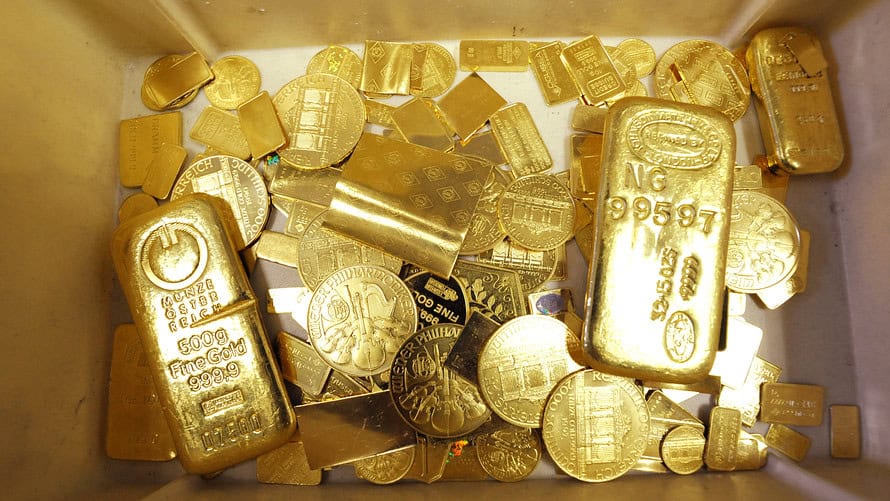
Downbeat China data curbs risk appetite; gold off 0.9% for the week
A round of weaker-than-expected Chinese economic data spooked global investors Friday, but failed to provide a lift for gold thanks to a stronger U.S. dollar.
The metal was down “after a couple of stronger-than-anticipated U.S. economic data points, in particular the retail sales readings and upward revision of October’s data,” said Jeff Wright, executive vice president of mineral exploration company GoldMining Inc.
Adding further pressure on gold, the U.S. dollar was “up on a number of factors including weak data from the EU and signs that U.S.-China tariffs are having an impact on the Chinese economy and hope… of reduced tensions into early 2019,” he said.
Gold for February delivery on Comex GCG9, -0.41% lost $6, or 0.5%, to settle at $1,241.40 an ounce — the lowest finish since Dec. 3, according to FactSet data. It ended down 0.9% for the week. March silver SIH9, -1.48% fell 21.8 cents, or 1.5%, to $14.637 an ounce, with prices settling around 0.4% lower on the week.
China’s business activity mostly slowed in November, with industrial output showing a weaker-than-expected year-over-year rise of 5.4% in November after a 5.9% rise in October. Retail sales rose 8.1% year-over-year versus 8.6% in October, also coming in below expectations.
The softer data was blamed for a weak tone across global equity markets, with U.S. benchmark stock indexes moving broadly lower on Wall Street. The dollar, meanwhile, was seen as a beneficiary, rising solidly versus most major rivals.
“Gold’s depreciation on Friday continues to highlight how the yellow metal’s near-term outlook remains heavily influenced by the dollar’s performance,” said Lukman Otunuga, research analyst at FXTM, in a note.
The ICE U.S. Dollar Index DXY, +0.34% a measure of the U.S. currency against a basket of six major rivals, rose 0.4% as gold futures settled. Gold is often sensitive to movements in the dollar. A stronger U.S. unit is seen as a headwind for commodities priced in dollars as it makes them more expensive to users of other currencies.
Still, Naeem Aslam, chief market analyst at ThinkMarkets UK, emphasized that “it is important to keep in mind that we are close enough to put a high for the year for the dollar index, so we would expect retracement.”
U.S. data released Friday was solid, with November retail sales showing the holiday season got off to a strong start. Industrial production was up 0.6% in November, posting the strongest gain in three months.
The flash reading of the U.S. manufacturing purchasing managers index, however, fell to a 13-month low of 53.9 in December.
“Faced with rising interest rates and new record highs in the stock market, gold has done remarkably well in 2018, especially as consumer demand weakened even as mining output sets a new all-time high,” said Adrian Ash, director of research at BullionVault. “Supporting the gold market all through 2018, the geopolitical backdrop is worsening again, keeping [exchange-traded fund] positions firm and catching any dips in the price with new buying.”
The SPDR Gold Shares ETF GLD, -0.40% was down 0.4% Friday, but traded 1.3% higher month to date.
In other metals trade, March palladium PAH9, -1.82% fell $19.10, or 1.6%, to $1,171.60 an ounce. It had settled at a record on Wednesday on expectations of higher demand from the automotive sector, but finished less than 0.1% higher for the week. January platinum PLF9, -1.29% fell $12.20, or 1.5%, to $785.30 an ounce, for a weekly loss of nearly 0.7%.
March copper HGH9, -0.49% fell about half a cent, or 0.2%, to $2.763 a pound—up 0.1% on the week.


